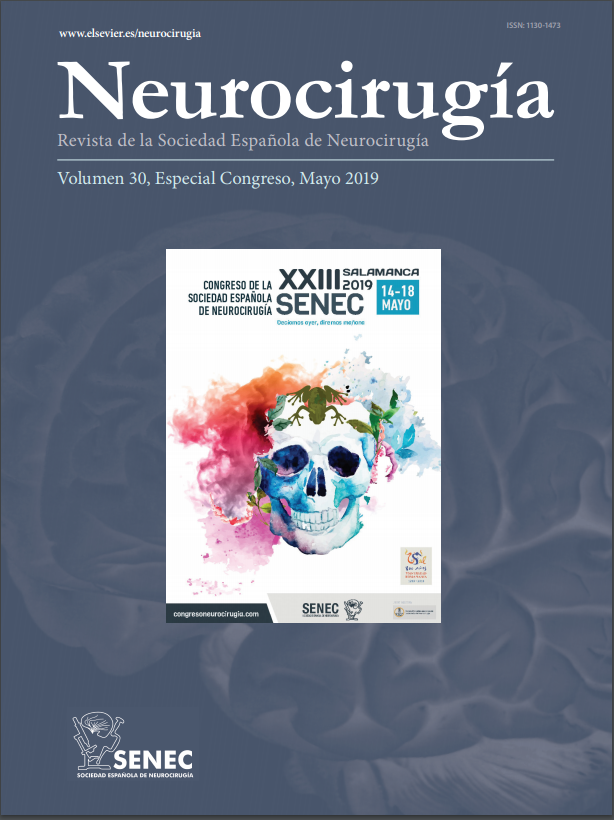C0454 - SPONTANEOUS PNEUMOCEPHALOUS DUE TO INADVERTENT SHUNT DISADJUSTMENT: CASE REPORT AND LITERATURE REVIEW
Hospital Universitario Marqués de Valdecilla, Santander, Spain.
Objectives: Spontaneous pneumocephalous (SP) is an uncommon complication of CSF shunts. It may be evidenced during the immediate postoperative period or appear years after. We report a case of an SP presented 14 years after shunt placement.
Methods: A 29-year-old woman was admitted to our department in 2002 due to hydrocephalus secondary to aqueductal stenosis. Intracranial hypertension was demonstrated in chronic ICP monitoring and a gravitational ventriculoperitoneal shunt was implanted. One year after, the valve was replaced by an adjustable model with the opening pressure (OP) set to 200 mmH2O, associated with a siphon-preventing device, due to overdrainage.
Results: The patient remained asymptomatic during the following years, however, radiographic signs of overdrainage persisted. In August 2017 she underwent a control MRI and three months later she presented with uncontrollable headache. A multiplanar cranial CT demonstrated pneumocephalus, with no visible skull defect. Control x-ray showed an OP of 30 mmH2O. No active CSF fistula was apparent after intraventricular contrast injection through the shunt reservoir. Bed rest, high-continuous flow oxygen and shunt reprogramming to 200 mmH2O resolved the pneumocephalus. One year later, in the context of an air travel, the patient suffered a new episode of shunt disadjustment with SP, which responded again to the aforementioned treatment.
Conclusions: Long-standing intracranial hypertension can involve bony erosion. The defect could be temporarily plugged by intracranial content until a new pressure gradient reopens it. Inadvertent shunt disadjustment to an inadequate low OP, may trigger the needed pressure gradient to allow defect reopening and air to enter the subarachnoid space. Although a bone reconstruction CT scan should be the optimal diagnostic tool, negative findings cannot rule out the existence of a micropore. If an active CSF fistula can not be demonstrated, modification of shunt OP and oxygenoterapy might be enough to resolve this condition.







